
|
|
From the Editor - June 1st, 2015
To start with this month, I must draw attention to some very significant revisions to the Barbini article which appeared last month. I've stated previously that the greatest reward for the very considerable effort involved in the preparation of these articles is the subsequent receipt of additional information or corrections from my better-informed readers. Apart from the enhancement of the site content which results from this process, it shows that people are reading this stuff and paying attention! Most encouraging ....... Last month's Barbini article was a case in point. Readers of that article will recall that I followed in the footsteps of several previous writers by naming Bruno Barbini as the designer and manufacturer of those engines. Very shortly after the appearance of that article in its original form, I heard from reader Walter Barbui of Treviso, Italy. Walter was sufficiently inspired by the article to actually track down Bruno Barbini and speak with him. How was this possible, you ask, given the fact that the Bruno Barbini of my original text would be 100 years old now if he was still with us?!? Very simple - it turns out that the The "real" Bruno Barbini is the nephew of Giovanni Barbini. He became personally involved with the manufacture of the Barbini engines in a hands-on capacity during the final decade or so of the marque's existence. This of course explains the widespread association of his name, rather than that of his uncle Giovanni, with the Barbini marque. Time to set the record straight once and for all and assign credit where it's really due! As a result of his latter-day first-hand involvement, Bruno naturally retains an intimate knowledge of his uncle's activities. The new and highly authoritative information passed along by Walter Barbui as a result of this contact necessitated some significant amendments to the original article, which is now available in its corrected form. It's nice to be able to set the record straight after all these years! My sincere thanks to both Walter and the "real" Bruno for making this possible. Apart from the very welcome contact from Walter Barbui, the flow of additional information from readers on other topics has continued unabated. Over the past month I've heard from Geoff Peacock and Derek Butler regarding the Davies-Charlton story, Michael Noakes (by snail mail) regarding the FROG bicycle-spoke engines and both Ferenc "Somi" Somogyi and Maris Dislers with respect to the Alag article. Their additional comments have all been incorporated into the respective articles. This kind of commentary from my well-informed readership is more or less equivalent to the essential peer review to which academic papers are routinely subjected, hence greatly adding greatly to the authoritativeness of these articles. Please keep it up!! I will always openly acknowledge any such input. Another contact from a long-standing reader going back to MEN days is Dave Miner from Seattle, Washington, USA. Dave has a really great idea for a build series on a small diesel that can easily be constructed by anyone with a lathe. I plan to discuss this further with Dave, in the hope that I may soon be adding engine building articles to the scope of topics available on the site, thus hopefully in turn further expanding the range of its readership. Another reader who communicated with me during the month was my long-standing English friend and colleague Miles Patience, who helped me greatly with my earlier Yulon article on Ron Chernich's "Model Engine News" (MEN) web-site. Miles has a wonderful collection of mega-rare engines, and like me he's not afraid to give them a run now and then. His latest running venture was nothing less than an original Elf Six sparker!! What a treat to see and hear that wonderful creation running!! Check it out here. Miles tells me that it proved to be incredibly easy to start - with a wide blade 14” x 4” BY&O prop fitted, all that was necessary was to suck fuel through the delivery line to the engine, give it six more choked turns to get the cylinders wet, switch on the ignition circuit and it started in 3 flicks! Just listen to that lovely exhaust note - pure music!! Thanks for that, Miles - made my week, that's for sure!
The technical topic for this month is a dissertation on the subject of fuels for variable-compression model diesels. This is intended to complement the information on fuels which was included in my earlier article on fixed-compression diesels. As commercial ready-mixed diesel fuels become ever harder to obtain in many parts of the world, I thought that it might be helpful to put up some basic information to guide those who may be contemplating brewing their own fuel. Now, a product review. Woody Bartelt of Aero Electric can now supply a few more of the hard-to-get FROG 500 parts that often require replacement in typical examples of that engine. I reviewed his excellent FROG 500 replica cylinder heads in my February editorial. Woody has now added tanks to his range of offerings, along with a very nicely-made and quite accurate replica timer for the FROG 500 petrol model. The latter offering will be most welcome given the many examples of the FROG 500 PE model which have lost their timers due to their having been operated as glow-plug units. I received several of these components from Woody, finding them to be very well-made, like all of There are a few pitfalls. The main issue is the fact that the outside diameter of the tanks at the front is slighty too large to fit into the tank recess in the backplate, requiring that the O/D be turned down a little at the front for proper fitting. Easily and neatly done if you have a lathe handy, but a bit tricky otherwise. Lacking a lathe, I'd simply file a chamfer at the front of the tank - that would do it. Hopefully this will be corrected in any future batches that Woody may make if the demand is there. A minor issue is the fact that the filler cap is a Gits item as opposed to the original Partridge unit. However, it looks fine. The other minor issue is that the fuel line hole is centrally located instead of being displaced slightly to the transfer side. However, the tank still "looks right", especially once fitted.
Already I forsee a future problem for the more fastidious collectors. The parts supplied by Woody are sufficiently faithful to the originals that I confidently expect a few Of course, if you just want the engine for flying purposes, this isn't that big an issue. The FROG 500 is a great-running and very dependable sparker. I've seen several glow-plug FROG 500 glow-plug models that have been retro-fitted with Ohlsson timers. Last month I alluded to some concerns regarding the status of Enya engines. I was assured by Ken Enya that all is well and that the Enya Direct sales site would soon be fully updated and re-populated. Let's hope that events prove this to be correct .......... we're still waiting.
Perhaps the most sobering news is that this is all that we’ll get - ever! CS do not intend to develop any additional new models in the future. Sadly, this includes the even further improved Vision 3 version of the OT30 Twin as well as the planned Mills Twin, both of which were well along in the development phase. I for one very much regret this latter decision, although it's perfectly understandable. Hans says that the sweeping worldwide adoption of brushless electric technology has made new model I/C engine development uneconomic. I have little doubt that this is an accurate asessment. There will likely always be a niche market for small-scale high-precision engines for which a premium price can be charged, but the development of ambitious new designs can only be economically viable if there's a sufficient market base for them. Even continued production of existing models is a marginal proposition – CS is doing it partially because they already have the dies and tooling, but mainly because Hans is a genuine model engine enthusiast who sincerely views his company (rightly in my Even without any future new offerings, the continued production of some of CS's finest existing models is very good news - we're far better off with these engines than without them! CS have made great strides in recent years with respect to quality control, to the point where almost all of their engines can now be made to work very well indeed with little trouble. I'd urge all of my readers to support their efforts to the fullest extent possible - use 'em or lose 'em! Turning now to next month, the feature article will be a review of one of the more inscrutable model engine ranges to emanate from Japan during the early post-classic era - the HGK range. This was one of my more challenging reviews - I hope that the end result will be seen as having been worth it! I think that's about it for this month. Happy reading, good flying and productive metal mangling, and I'll be back next month! Cheers, Adrian Duncan Coquitlam, BC, Canada
|
| |
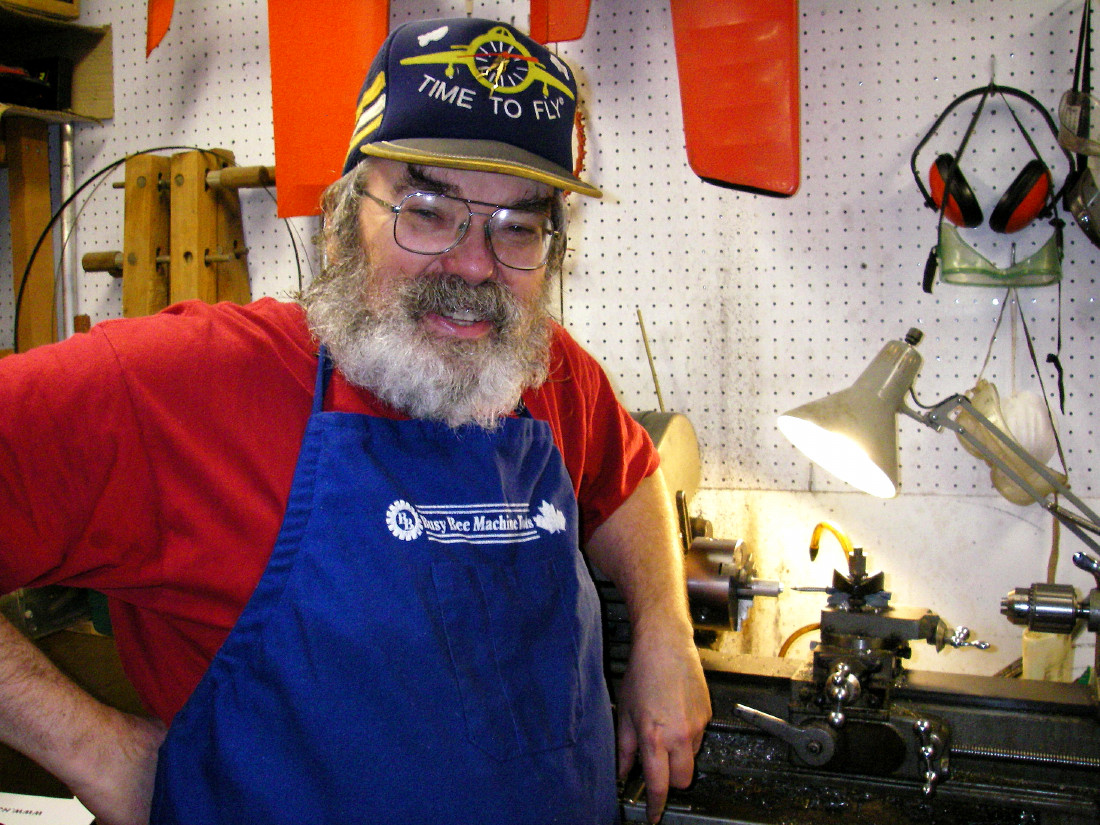 Welcome to June 2015! By now all of you Northern Hemisphere types should be well into model flying mode, while those of you in the South shivering through winter can only be deemed worthy of our commiserations! Still, here's another issue to cheer you up (hopefully!.
Welcome to June 2015! By now all of you Northern Hemisphere types should be well into model flying mode, while those of you in the South shivering through winter can only be deemed worthy of our commiserations! Still, here's another issue to cheer you up (hopefully!. 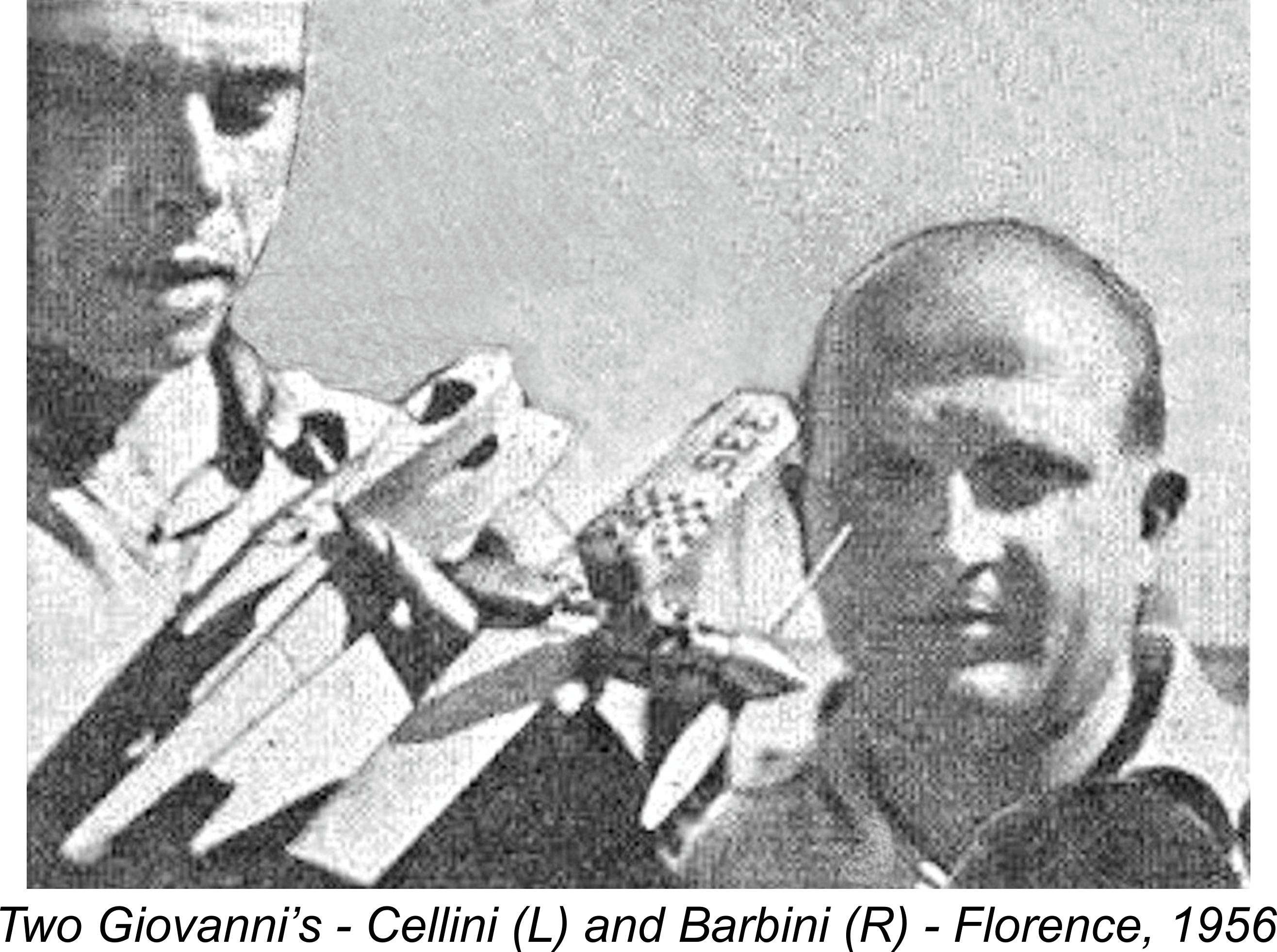 Barbini engines were actually made by Amelio Giovanni Barbini (always apparently known as Giovanni), which instantly explains the otherwise rather puzzling inital "A" in the company's name! There is a Bruno Barbini, but he is only 60 years old as of 2015, hence having not even been born when the Barbini engines first appeared!
Barbini engines were actually made by Amelio Giovanni Barbini (always apparently known as Giovanni), which instantly explains the otherwise rather puzzling inital "A" in the company's name! There is a Bruno Barbini, but he is only 60 years old as of 2015, hence having not even been born when the Barbini engines first appeared!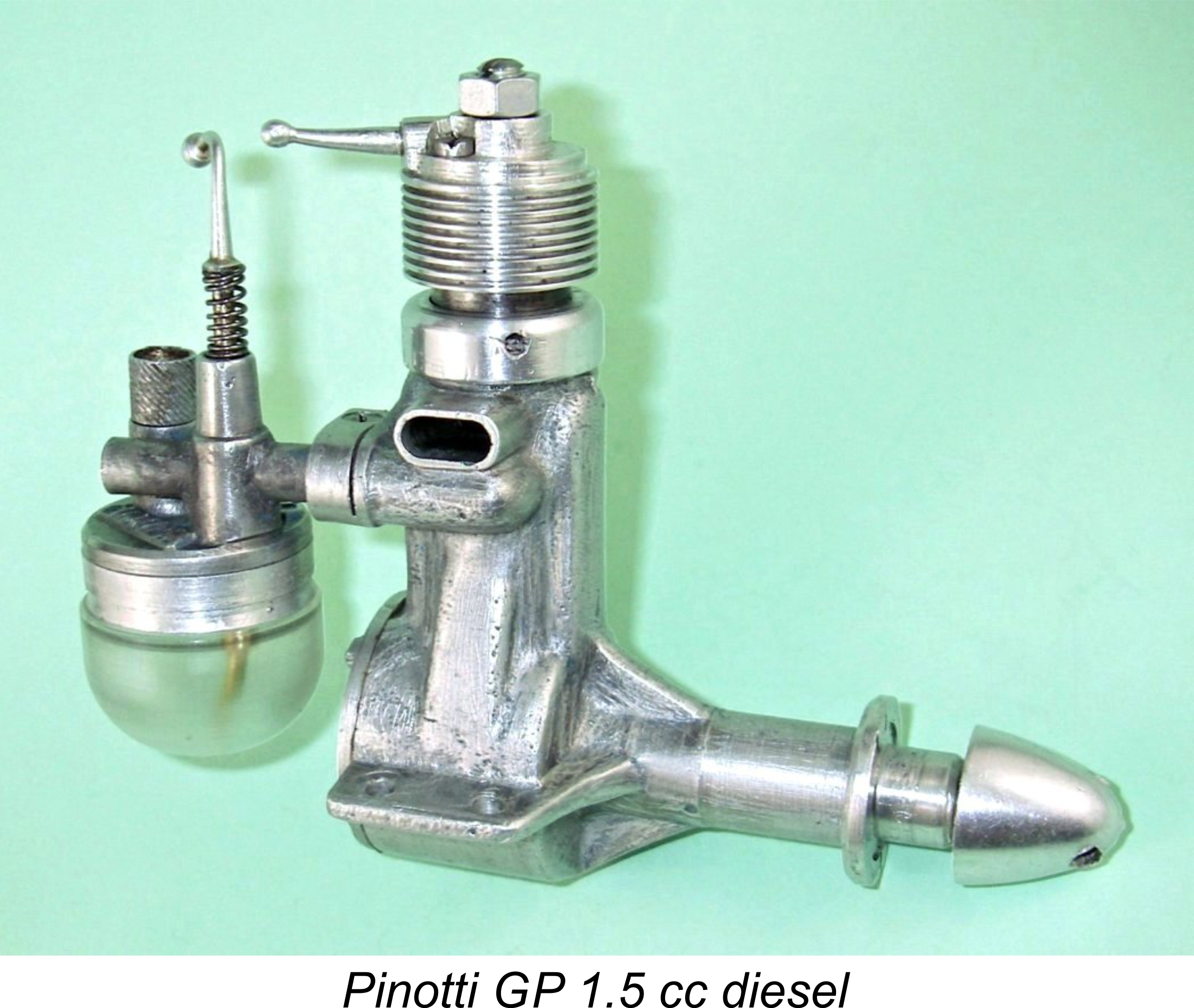 Turning now to this month's additions to the site, the feature article is the first-ever in-depth review of the life and work of a man who may now belatedly be recognized as one of the great pioneers of model diesel engine design - Giancarlo Pinotti. This remarkable and multi-talented individual was born in Italy but emigrated to Sweden, where he manufactured that country's first-ever commercial model engines beginning in 1938. In 1942 he joined the ranks of the pioneers of model diesel technology, going on to manufacture small numbers of two excellent commercial designs of that type between 1944 and 1950. His illustrated GP 1.5 cc model which appeared in early 1944 was Sweden's first commercial model diesel. The full details of his life and work are set out in the story of the
Turning now to this month's additions to the site, the feature article is the first-ever in-depth review of the life and work of a man who may now belatedly be recognized as one of the great pioneers of model diesel engine design - Giancarlo Pinotti. This remarkable and multi-talented individual was born in Italy but emigrated to Sweden, where he manufactured that country's first-ever commercial model engines beginning in 1938. In 1942 he joined the ranks of the pioneers of model diesel technology, going on to manufacture small numbers of two excellent commercial designs of that type between 1944 and 1950. His illustrated GP 1.5 cc model which appeared in early 1944 was Sweden's first commercial model diesel. The full details of his life and work are set out in the story of the 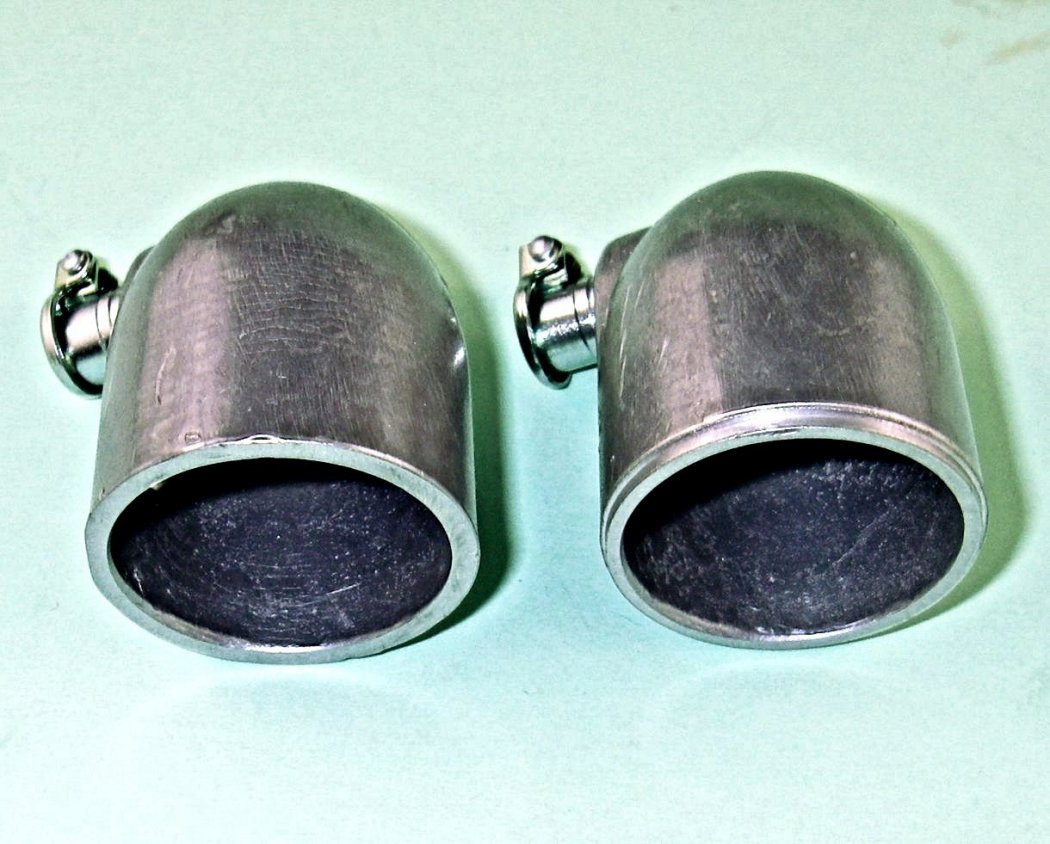 his offerings. In terms of their appearance, they match the originals very closely indeed. They're not cheap, but you have to balance that against the value of an engine that is restored to its original configuration. Check out
his offerings. In terms of their appearance, they match the originals very closely indeed. They're not cheap, but you have to balance that against the value of an engine that is restored to its original configuration. Check out 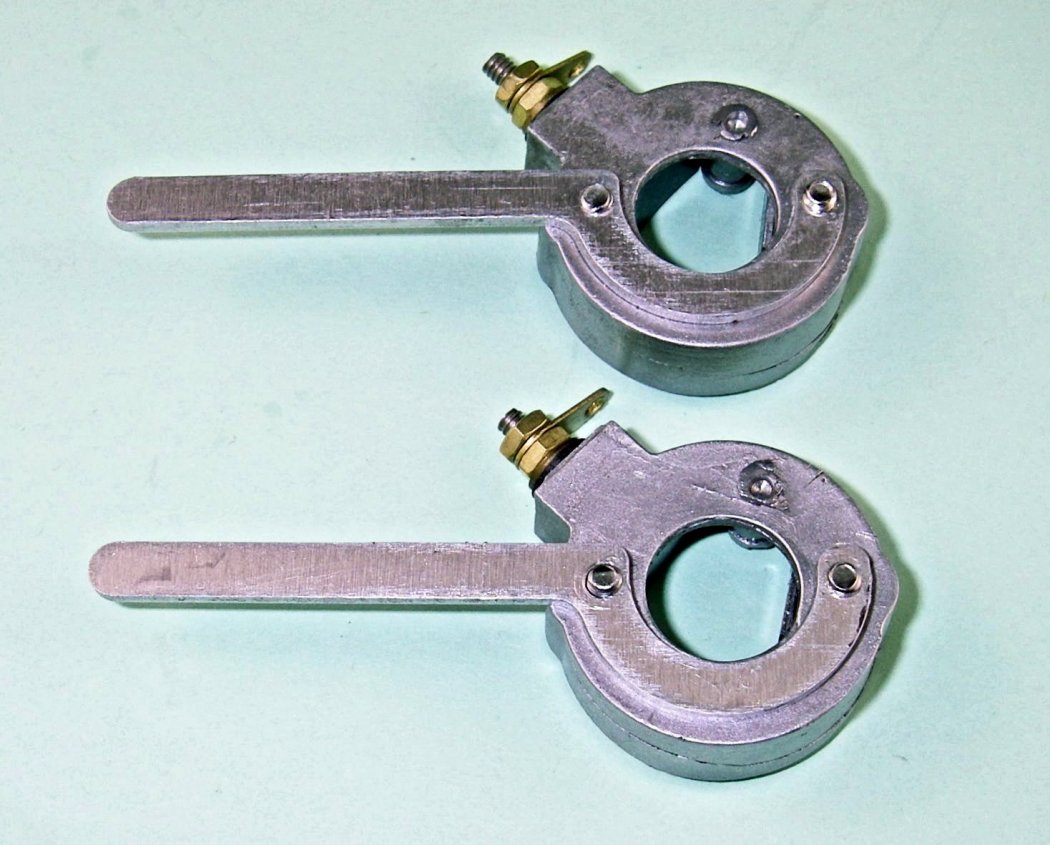 Woody's replica timers also look great and work well. They're very faithful indeed to the original, the sole exception being that the moving point pivot is riveted onto the timer body instead of being a screw-in component as on the original. The problem with this arrangement is that the head of the rivet protrudes a little above the rear surface of the timer where it butts against the front face of the location flange at the front of the main bearing. You have to carefully remove a little material from the inside portion of this rivet head to allow the timer to sit flush with its location flange - see the attached image of stock and modified replica timers at top and bottom respectively. Easily done - just a bit of a pain! That said, illustrated FROG 500 no. PE554 which was completed using Woody's components now looks a treat and is all ready to run!!
Woody's replica timers also look great and work well. They're very faithful indeed to the original, the sole exception being that the moving point pivot is riveted onto the timer body instead of being a screw-in component as on the original. The problem with this arrangement is that the head of the rivet protrudes a little above the rear surface of the timer where it butts against the front face of the location flange at the front of the main bearing. You have to carefully remove a little material from the inside portion of this rivet head to allow the timer to sit flush with its location flange - see the attached image of stock and modified replica timers at top and bottom respectively. Easily done - just a bit of a pain! That said, illustrated FROG 500 no. PE554 which was completed using Woody's components now looks a treat and is all ready to run!! attempts to pass off modified FROG 500 glow-plug units as original PE models. The machining required to modify the front of the main bearing is very simple indeed, making such a conversion very straightforward now that Woody's parts are available. It's a case of buyer beware - if you really care about historical originality, check those serial numbers! Any FROG 500 PE model having a five-digit serial number and/or lacking the PE prefix to its serial number (or showing signs of those letters having been added after the fact - easily spotted) is a modified glow-plug model, however good it looks!
attempts to pass off modified FROG 500 glow-plug units as original PE models. The machining required to modify the front of the main bearing is very simple indeed, making such a conversion very straightforward now that Woody's parts are available. It's a case of buyer beware - if you really care about historical originality, check those serial numbers! Any FROG 500 PE model having a five-digit serial number and/or lacking the PE prefix to its serial number (or showing signs of those letters having been added after the fact - easily spotted) is a modified glow-plug model, however good it looks!  Some similar concerns recently arose with respect to the
Some similar concerns recently arose with respect to the 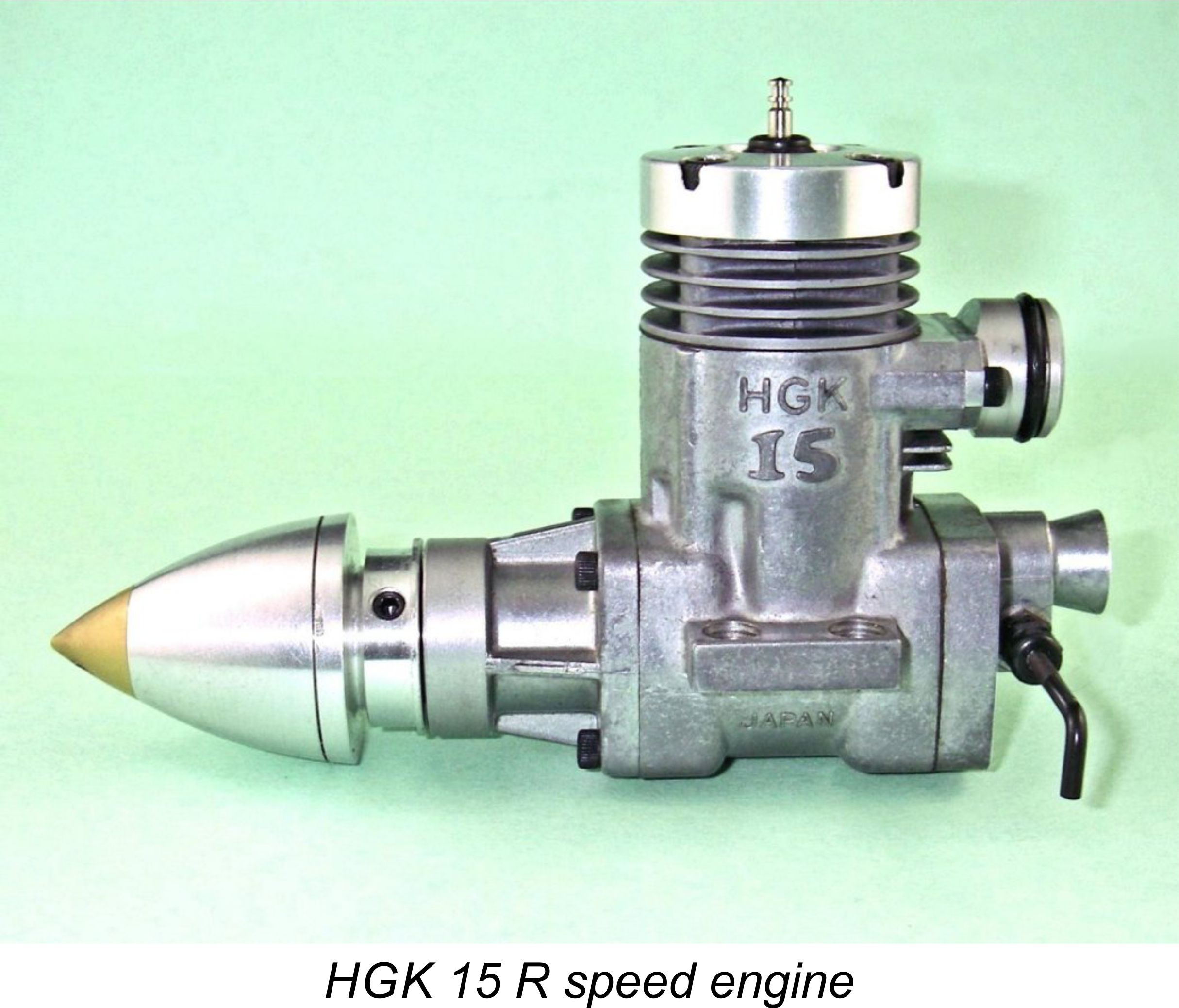 opinion) as providing a useful service to his fellow enthusiasts. They will be making their bread and butter in future by undertaking machining work for others under contract.
opinion) as providing a useful service to his fellow enthusiasts. They will be making their bread and butter in future by undertaking machining work for others under contract.